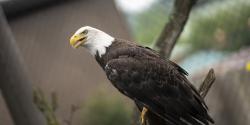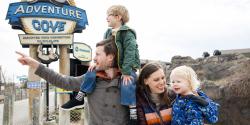The reticulated python is the world's longest reptile and among the three heaviest snakes.
The Latin word reticulatus means “net-like” and refers to the snake’s color pattern — a complex geometric pattern of tan, brown, golden yellow, and black.
Scientific Name: Malayopython reticulatus
Conservation Status: Least Concern
Size: Body length can be up to 28 feet, but the more common range is between 10 and 20 feet.
Weight: Up to more than 300 pounds
Median Life Expectancy: 11 years









